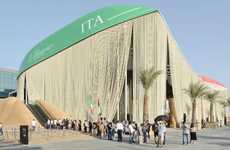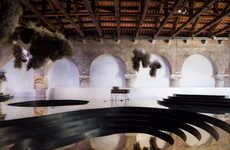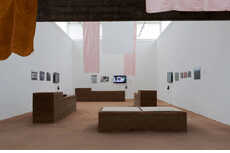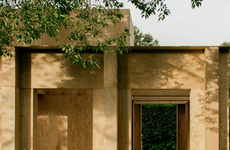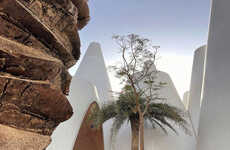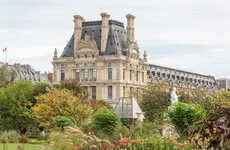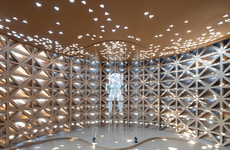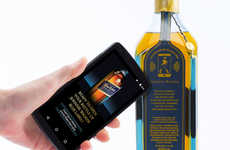
The Russian Pavilion at the Venice Architecture Biennale Exhibits Technology
Alexandra Serrano — August 29, 2012 — Tech
References: labiennale.org & dezeen
Showcasing epitomized technology and architecture, the Russian Pavilion at the Venice Architecture Biennale is a marvel.
QR codes are used to entirely cover the top floor of the Russian Pavilion. Visitors of the pavilion are encouraged to use tablets that decode the surface in order to unravel the contents of the exhibit. The focal theme of the exhibit it exploration of a new Russian city dedicated to information and studies in science.
The pavilion as a whole is a large architectural juxtaposition. This is achieved by contrasting the aforementioned top floor with a lower pavilion level that exhibits the secretive and gated science towns that were established during the Soviet Union. Contrasting open source with its antithesis is striking, and an interesting expression of modern day Russia.
QR codes are used to entirely cover the top floor of the Russian Pavilion. Visitors of the pavilion are encouraged to use tablets that decode the surface in order to unravel the contents of the exhibit. The focal theme of the exhibit it exploration of a new Russian city dedicated to information and studies in science.
The pavilion as a whole is a large architectural juxtaposition. This is achieved by contrasting the aforementioned top floor with a lower pavilion level that exhibits the secretive and gated science towns that were established during the Soviet Union. Contrasting open source with its antithesis is striking, and an interesting expression of modern day Russia.
Trend Themes
1. QR Code Technology - Exploring the use of QR codes as a means to enhance visitor experience and provide interactive exhibits.
2. Architecture and Technology Integration - Combining architecture and technology to create immersive and innovative exhibition spaces.
3. Contrasting Open Source with Traditional - Highlighting the contrast between open and closed systems, and exploring the potential disruptive innovations in bridging the gap.
Industry Implications
1. Architecture - Incorporating technology into architectural designs to create interactive and engaging spaces.
2. Information Technology - Developing new applications and software that utilize QR codes for interactive experiences.
3. Cultural Exhibitions - Revolutionizing the way cultural exhibitions are presented and experienced through the integration of technology and design.
6.6
Score
Popularity
Activity
Freshness

